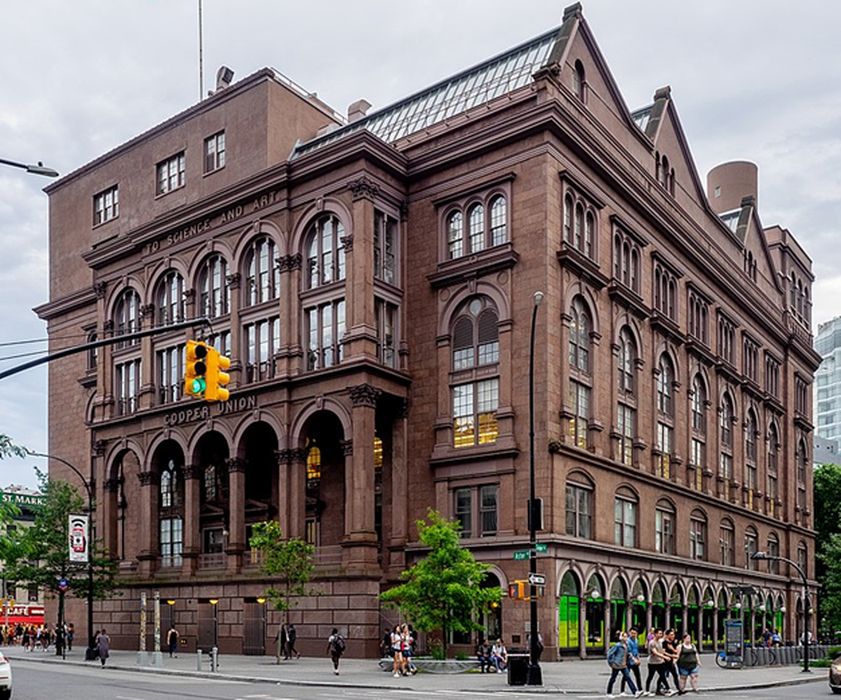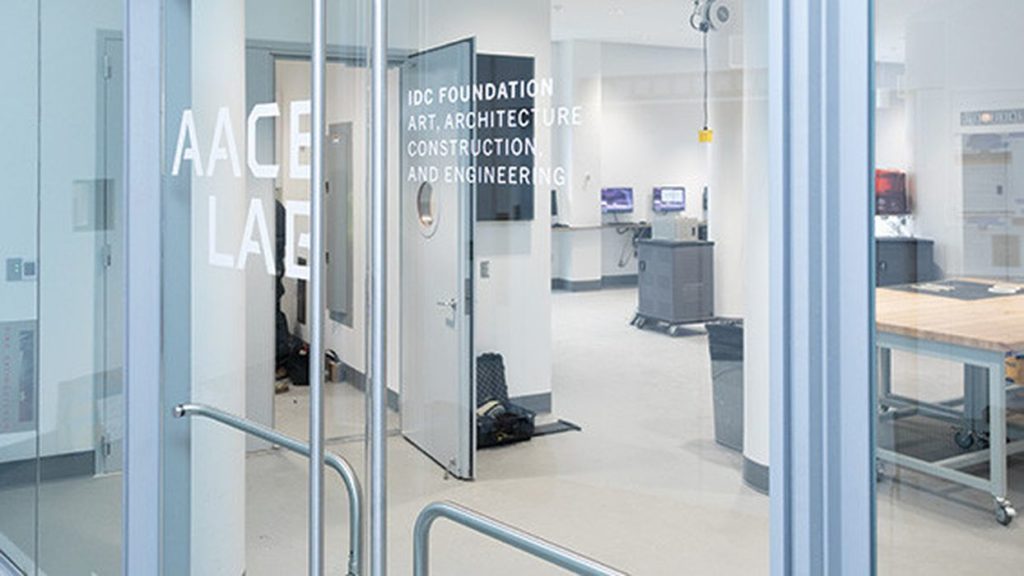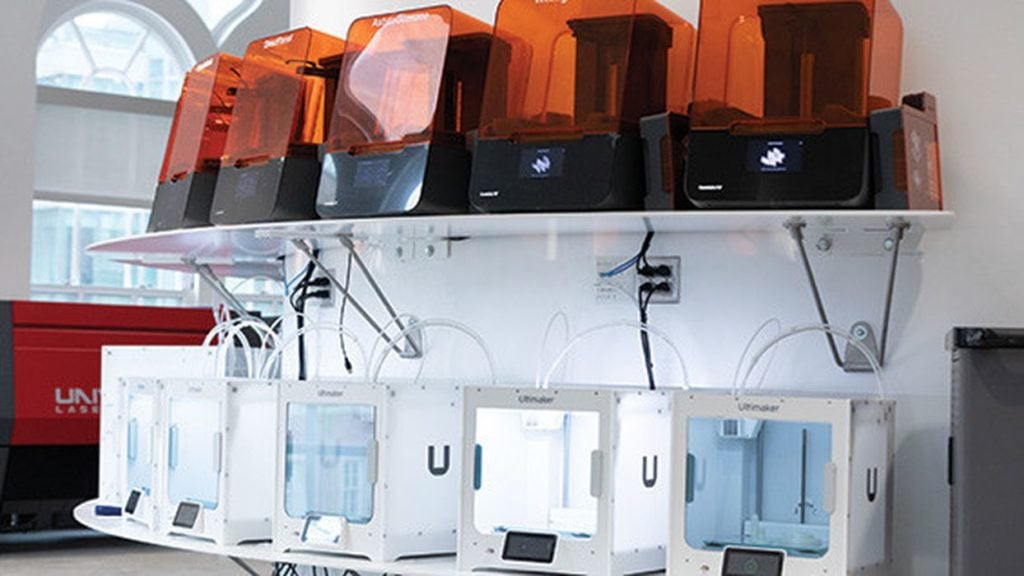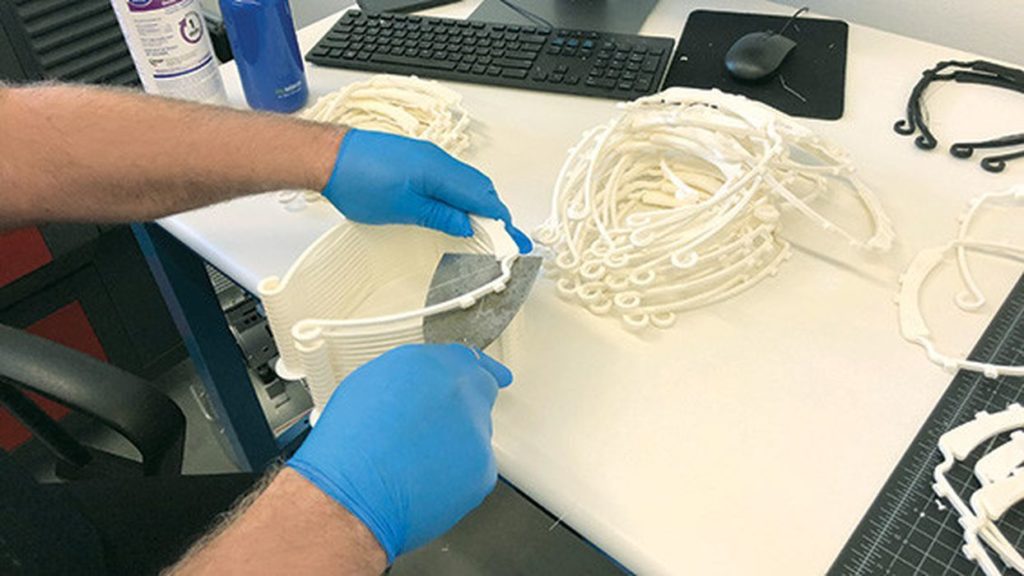
Charles R. Goulding and Johnson Jiang examine how a 3D printing lab helped transform Cooper Union.
The Cooper Union for the Advancement of Science and Art is a private college in New York City that specializes in just three disciplines: art, architecture, and engineering. The college is so small that, in fact, some Manhattan residents have never heard of it. Despite this, the Cooper Union has made several significant contributions to New York City, in part due to its unique view on education.
The Cooper Union is not a research university that brings in millions of dollars in research grants, nor does it have a historic Ivy-styled campus. Rather, it is a school that focuses on providing affordable, high-quality undergraduate education on a highly merit-based system. Most recently, the Cooper Union has joined a long list of private and public colleges and universities in adopting 3D printing technologies to enhance its pedagogical aims.
History of the Cooper Union
The Cooper Union is a unique institution with a long history in higher education. To understand and appreciate its decision towards implementing 3D printing, one must first understand its history.
The school bears the namesake of its founder, Peter Cooper. Peter Cooper founded the institution in 1859 on the radically progressive notion that education should be open and free to all people, regardless of race, religion, sex, wealth, or social status. The school ran on a tuition-free model that offered night classes for the applied sciences and design/art classes during the day.
Early alumni include inventor Thomas Edison and artist Augustus Saint-Gaudens. The school was primarily funded through the wealth of Peter Cooper, mostly through his real estate holdings. In 1902, a daytime engineering college was formally established that was financed through donations from Andrew Carnegie worth US$600,000 (more than US$17M in today’s dollars).
The college’s Foundation Building features an auditorium at the basement level known as the Great Hall. It was intended to be a place for lectures, discussion, and discourse on current problems. The Great Hall has historically been a platform for many social and political movements and has hosted several important historical figures. The most famous example is Abraham Lincoln, who would give the speech that would launch him into the presidency. Other American Presidents would speak at the lectern such as Theodore Roosevelt, Wilson, Clinton, and Obama. The Great Hall would also host speakers such as Frederick Douglass, Susan B. Anthony, and Mark Twain.
In 2011, the Cooper Union faced serious financial trouble. It announced it had depleted its endowment and had an annual deficit of approximately US$16M. The cause of the financial problems is attributed to a variety of reasons. These include mismanagement of the school’s assets, lingering effects of the 2008 economic recession, as well as undertaking significant debt to build the new engineering building.
In 2012, the administration announced that it would institute tuition for the class of 2014 and beyond as well as for graduate students. However, the decision was met with fierce protests and legal action. In 2015, a lawsuit was settled that appointed an independent monitor to review the school’s finances. Additionally, a committee would be created by the board of trustees to find a way to return the school to its tuition-free status. Currently, the Cooper Union gives half-tuition merit scholarships to all undergraduate students as well as appropriate need-based financial aid.
The AACE Lab at Cooper Union
In late 2020, the Cooper Union opened a maker space facility, known as the IDC Foundation Art, Architecture, Construction, and Engineering (AACE) Lab, after being awarded a $2 million grant from the IDC Foundation. The AACE Lab gives students opportunities to build and design artwork, prototypes, models. The grant was given in hopes of facilitating innovation and collaboration among the three disciplines of art, architecture, and engineering.

The availability of modern, digital fabrication methods enables students to collaborate efficiently with minimal lead times and offers students flexibility that is especially advantageous during the pandemic. With restricted access and social distancing protocols being implemented, students and faculty can easily upload a digital file that is virtually sent to the equipment to be fabricated.
The lab accommodates a diverse range of objectives. One such project from the AACE Lab was the printing and fabrication of 1,500 protective face shields that were donated to local health workers. The lab comes with a whole package of equipment, from printers to virtual reality technology. The AACE Lab has over 30 pieces of 3D printing equipment. This includes the 3D Systems Projet 460plus, the Melco CNC Embroidery machine, and the 3D Fablight 4500.

The Cooper Union is only a recent addition to the already Additive Manufacturing-minded academia. Many other universities have given Additive Manufacturing (AM) and 3D printing a curricular structure in the engineering disciplines. A literature review by Ford et al. summarizes the extent of 3D printing classes and outreach in secondary and higher education. Much of AM education material focuses on engineering/industrial design, product development, and business applications.
It has been noted that implementing 3D printing into the curriculum improved student engagement in learning and motivated participants to further pursue the STEM fields. The Ford et al. article cites the Cooper Union’s six-week summer STEM program, where it introduced high school students to CAD, 3D printing, and the engineering design process. A post-program survey indicated that 17 of the 22 participants reported that the program changed their study intentions, and all 22 participants would pursue STEM as a career.
The Cooper Union has ensured the inclusion of the arts for the STEAM focus of the AACE Lab. The application and demand of 3D printing towards the arts and aesthetic work are beginning to grow. The AACE Lab has the technical capabilities to meet a wide range of fabrication needs to create precision cut sheet metal, embroidered textiles, and waterjet-cut glass elements. The precision and accuracy of 3D printing machines enable the design of more intricate and complicated patterns for embroidered materials. This brings new hopes and opportunities for the future of garment industry.
The apparel industry has always been an important part of New York City history. In its heyday, the Garment District was the center of fashion manufacturing and design. While still operational, the industry in New York has decreased since the 1980’s. However, 3D printing offers a way to improve production operations and versatility. Many embroidery firms have transitioned to making PPE for frontline workers during the height of the COVID lockdowns to provide support for the healthcare industry. Many embroidery firms can benefit from using 3D printing technologies to quickly adapt to external circumstances and expand their product line.

The Cooper Union is well-positioned to further develop AM and 3D printing opportunities for its students. Hopefully, it will be able to adapt and keep in-pace with the ever dynamic and disruptive technologies that define a new era of fabrication.
The Research & Development Tax Credit
The now permanent Research and Development (R&D) Tax Credit is available for companies developing new or improved products, processes and/or software.
3D printing can help boost a company’s R&D Tax Credits. Wages for technical employees creating, testing, and revising 3D printed prototypes can be included as a percentage of eligible time spent for the R&D Tax Credit. Similarly, when used as a method of improving a process, time spent integrating 3D printing hardware and software counts as an eligible activity. Lastly, when used for modeling and preproduction, the costs of filaments consumed during the development process may also be recovered.
Whether it is used for creating and testing prototypes or for final production, 3D printing is a great indicator that R&D Credit eligible activities are taking place. Companies implementing this technology at any point should consider taking advantage of R&D Tax Credits.
